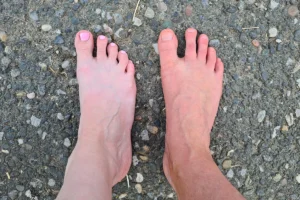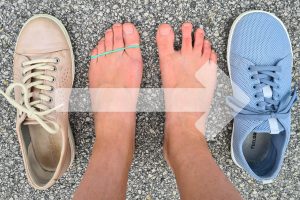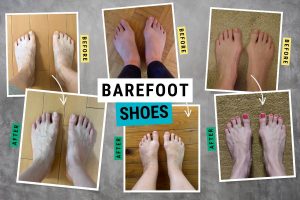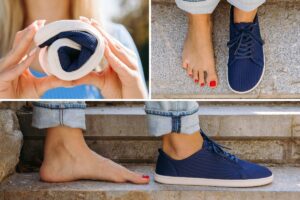Science Confirms It: Most Shoes Aren’t Shaped Like Feet
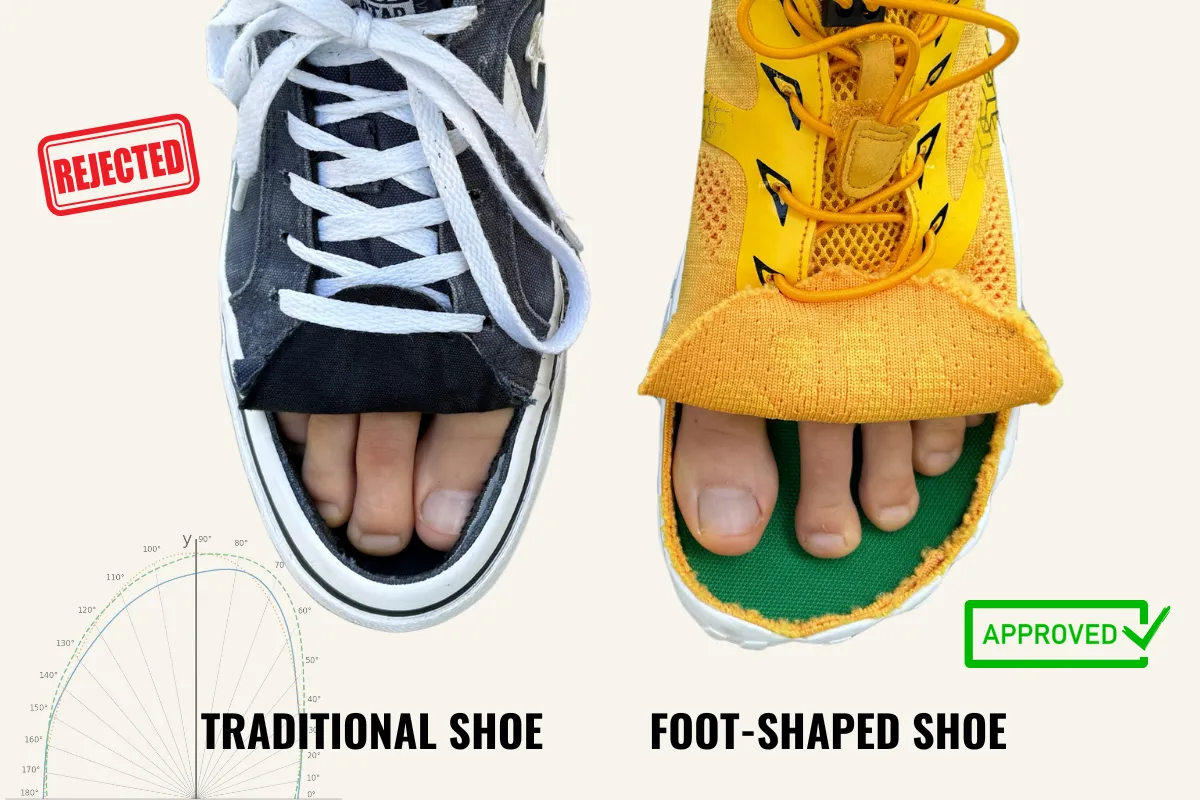
When you buy shoes, you’d expect them to match the shape of your feet, right? But science now confirms what many of us have felt for years: most shoes – even running shoes – aren’t actually foot-shaped.
In a groundbreaking study by Volumental, researchers Aleš Jurca and Sašo Džeroski compared real foot shapes to the shape of modern running shoes. The results? Even athletic shoes designed for performance still taper too much at the toes, crowding the very part of your foot that needs space to function naturally.
This confirms what we’ve been advocating for years: shoe design, not genetics, is often the problem.
✅ Key Takeaways
- Most modern shoes are not shaped like feet. Research shows a mismatch between foot anatomy and the shape of typical running shoes.
- Wide toe box shoes align more closely with the natural foot shape. These designs offer more space and comfort in the toe area.
- Toe freedom is critical for foot function, balance, and long-term health. Especially the big toe, which plays a key role in stability.
- Many adult feet are already deformed by traditional shoes. Switching to foot-shaped shoes can help restore alignment over time.
Why This Study Matters
Until now, most footwear research has focused on soles – shock absorption, performance, and impact forces. Very little attention has been paid to the upper of the shoe, especially the toe box, where comfort and fit are determined.
This study flipped the focus, asking:
Do shoes actually match the natural shape of feet?
Using over 115,000 3D foot scans and more than 1,000 top-view shoe images, researchers created an average foot shape and compared it to the average toe-box shapes of popular running shoes.

The Findings: Even Athletic Shoes Miss the Mark
Between 0°–30° and 150°–180°, all shoes generally follow the foot’s natural outline. But in the critical area – from 30° to 150°, where your toes live – the differences become clear:
- Regular running shoes are significantly narrower than the average foot shape between 50° and 76° (the region around the big toe).
- Wide, foot-shaped running shoes extended beyond the foot outline, indicating adequate space for the big toe.
- This shows that traditional running shoes actively restrict the big toe, while wide toe-box shoes allow for more natural splay.

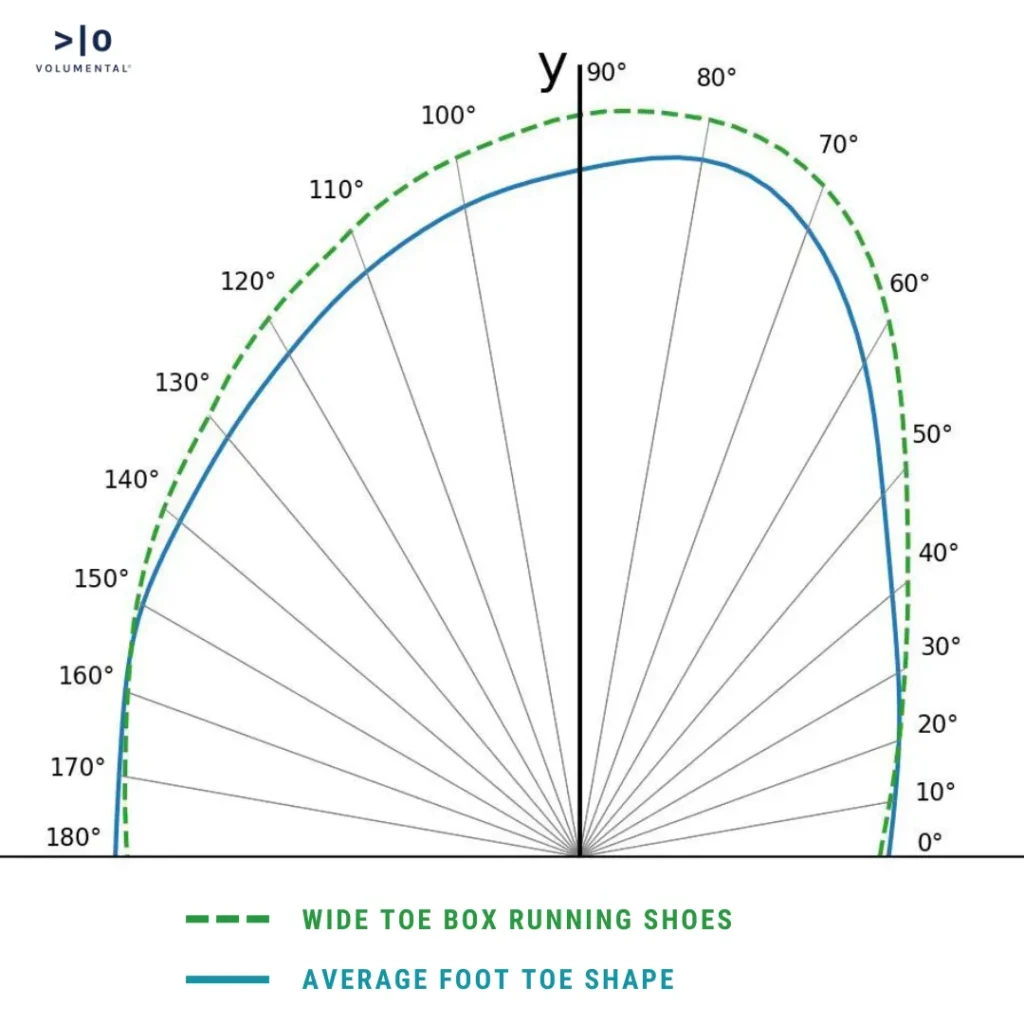
In simple terms:
👉 Regular shoes pinch. Foot-shaped shoes free.
The Twist: Most Adult Feet Are Already Deformed
Here’s what makes this study even more eye-opening.
The average foot shape used in the study was based on scans of adult men – people who’ve likely worn conventional shoes their entire lives. And you can clearly see the result: the foot is no longer widest at the tip of the toes (as it should be), but instead tapers inward, showing signs of compression and misalignment.
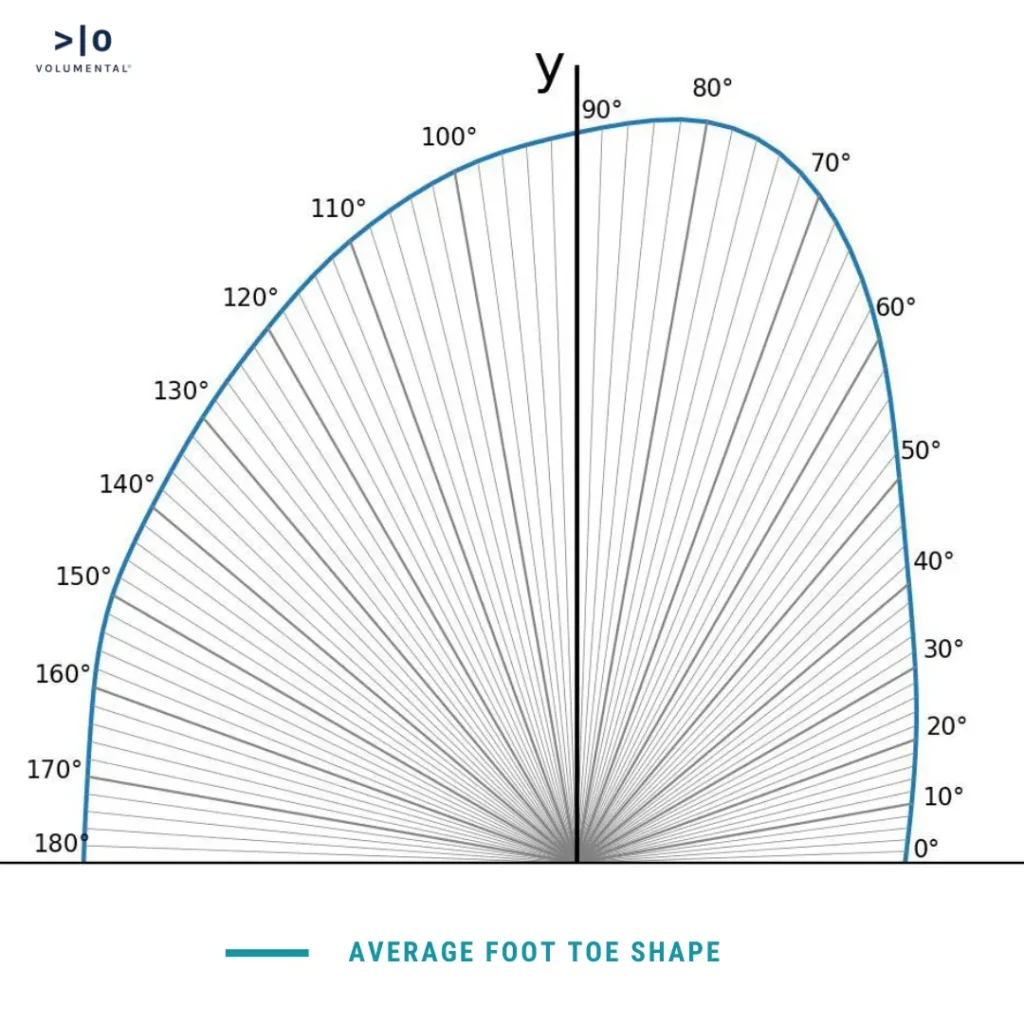
In other words, the “average” foot is already deformed by years of narrow, pointy shoes – which means the natural human foot shape is likely even wider and more splayed than what the data shows.
In short, the mismatch between foot and shoe is probably worse than the data suggests.
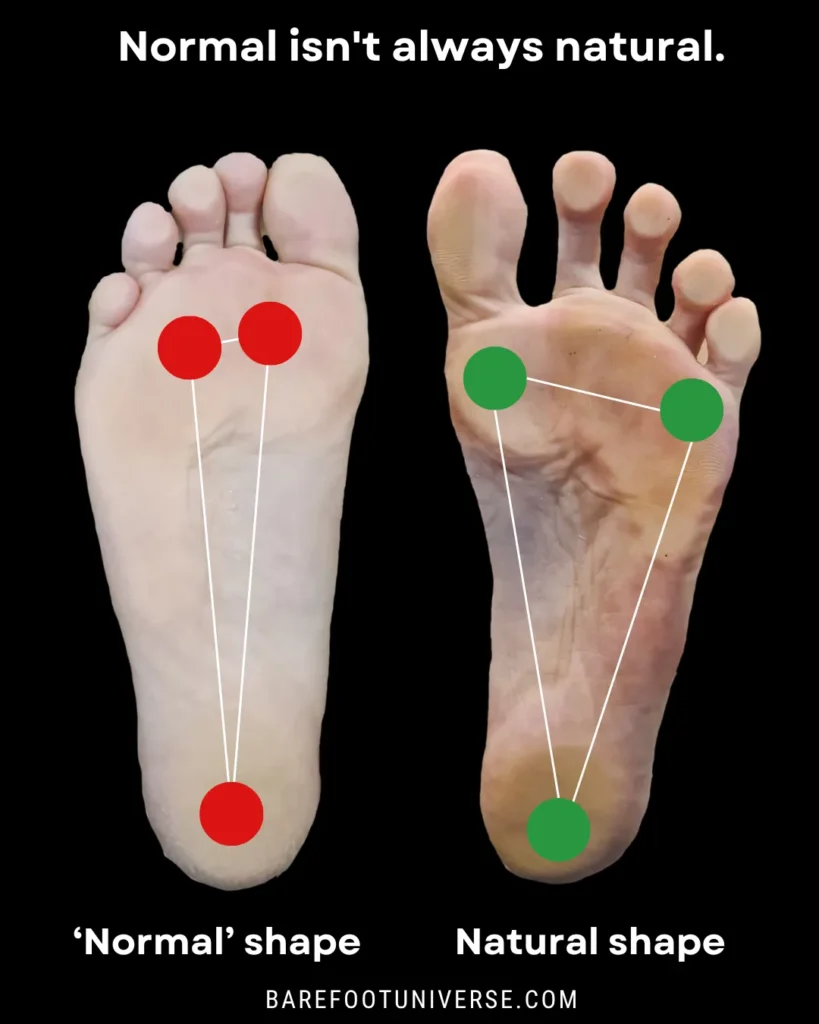
You can see just how much your foot shape can change in our Before & After Barefoot Shoes article, where we share real photos of how feet can spread and realign over time with barefoot shoes and foot exercises.
So if even the average, already-shaped-by-shoes foot doesn’t fit modern shoes, imagine how much worse the mismatch is when your goal is a truly healthy, natural foot. This is why we advocate for truly foot-shaped shoes – not just ones that match today’s compromised “average.”
Why Toe Box Shape Really Matters
Your toes are more than decorations – they’re stabilizers, shock absorbers, and anchors for movement. A narrow toe box:
- Shifts your weight unnaturally inward
- Reduces balance and proprioception
- Increases risk of bunions, hammertoes, and plantar fasciitis
- Limits your foot’s natural spring and muscle engagement
These issues, and more, are common consequences of traditional footwear. We cover them in detail in our Benefits of Barefoot Shoes guide, along with how barefoot shoes can help restore natural foot function.
A foot-shaped shoe with a wide anatomical toe box allows toes to splay, push off, and react to terrain – the way nature intended.
Why Foot-Shaped Shoes Are the Future
The researchers concluded that footwear brands must improve the ergonomics of their toe-box designs to match the natural shape of feet. But we know change in the industry is slow.
The good news? Some brands are already designing foot-shaped shoes that prioritize function and foot health. Brands such as Wildling, Dolfie Paradise, Lems, Feelgrounds, and hundreds more are now designing shoes shaped like feet – helping to shift the industry toward better foot health.

Want to see which shoes we recommend? Browse our top guides:
- Best Barefoot Sneakers
- Stylish Barefoot Shoes That Actually Look Good
- Best Wide Toe Box Shoes (That Aren’t Barefoot) – for beginners or anyone who prefers more cushioning
These guides are based on real testing, real feet, and real shape – not marketing.
👉 If you’re ready to find shoes that actually fit your foot’s natural shape, start with our Foot Width Quiz to see which brands and models are most compatible with your feet.
What This Means for You
This study validates what many of us have felt for years:
- Foot pain isn’t “just how your feet are” – it’s often a shoe design issue.
- Regular shoes don’t match foot anatomy.
- Even so-called “wide” shoes aren’t truly foot-shaped.
If you want healthy feet, you need shoes designed to fit your feet – not force your feet to fit the shoes.
Final Thoughts: Science Has Caught Up
This study backs up what barefoot shoe advocates have been saying for years: your feet aren’t the problem – your shoes are.
Thanks to Volumental’s data (which also powers our Foot Width Quiz), we now have hard evidence that the standard shoe shape simply doesn’t reflect real foot anatomy.
The future of footwear needs to be shaped by feet – not fashion.
Photo credits & research data courtesy of Volumental.



